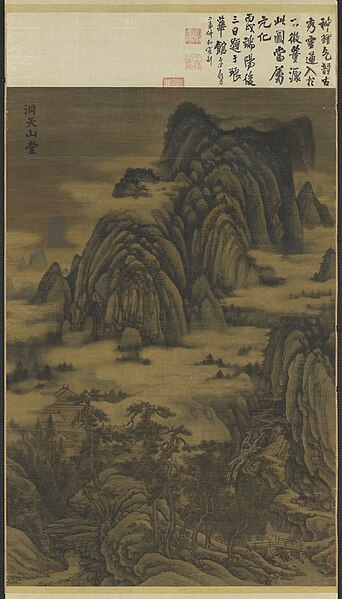Carlos Sebastián Pedro Hubert de Haes was a Spanish painter from Belgium. He was noted for the Realism in his landscapes, and was considered to be the "first contemporary Spanish artist able to capture something of a particularly Spanish 'essence' in his work". He was cited along with Jenaro Perez Villaamil and Aureliano de Beruete as one of the three Spanish grand masters of landscape painting, the latter of which was his pupil.
Carlos de Haes
La canal de Mancorbo en los Picos de Europa ("The Canal of Mancorbo in the Picos de Europa"), 1876, by Carlos de Haes (Museo de Prado).
Collection in the Museu d'Art Jaume Morera of Lleida
Tileworks in the Principe Pio Mountains
Landscape painting, also known as landscape art, is the depiction of natural scenery such as mountains, valleys, trees, rivers, and forests, especially where the main subject is a wide view—with its elements arranged into a coherent composition. In other works, landscape backgrounds for figures can still form an important part of the work. Sky is almost always included in the view, and weather is often an element of the composition. Detailed landscapes as a distinct subject are not found in all artistic traditions, and develop when there is already a sophisticated tradition of representing other subjects.
Joachim Patinir (1480–1524), Landscape with Charon Crossing the Styx, 1515–1524. Patinir pioneered the "world landscape" style.
Themistokles von Eckenbrecher (German, 1842–1921), View of Lærdalsøyri, on the Sognefjord, 1901
Dong Yuan (934–962) Dongtian Mountain Hall (Chinese: 洞天山堂圖). 10th century, the Five Dynasties (Chinese). National Palace Museum, Taipei.
Landscape with scene from the Odyssey, Rome, c. 60–40 BCE








